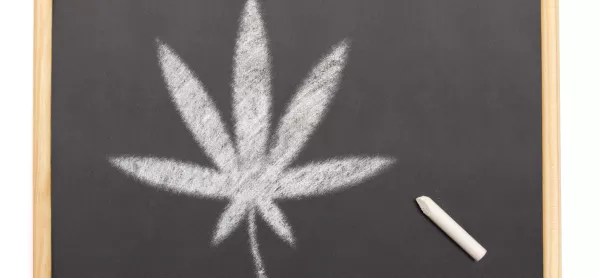Drug incidents in schools up by more than a quarter
Share
Drug incidents in schools up by more than a quarter
Children as young as nine have been caught with drugs on school premises - with overall numbers of similar incidents increasing by more than a quarter in four years, an investigation has found.
More than 2,600 cases involving drugs on school grounds were reported to police in England and Wales between 2016 and 2019, according to data released following a freedom of information (FOI) request.
The overwhelming majority of cases involved cannabis, but other drugs included Class A substances such as cocaine, heroin and MDMA (ecstasy).
Warning: Gangs target SEND pupils to sell drugs
Warning from Ofsted: Drug gangs targeting private school pupils
Read: Biggest-ever drug prevention trial launched in schools
The majority of cases involved possession of drugs on school premises, but there were other cases of supply - a more serious offence - as well as drug trafficking, which is a key indicator of “county lines” activity.
Headteachers said it was “rare” for drugs to be brought on to school premises, but added that schools were concerned about young people being coerced into dealing by gangs.
Geoff Barton, general secretary of the Association of School and College Leaders, said: “Most young people do not take drugs, and it is rare for them to be brought on to school premises.
“However, like much else, trends reflect what is happening more widely, and schools are particularly concerned about the sinister spread of the drugs trade by so-called ‘county lines’ gangs, in which vulnerable young people are coerced into dealing.
“Schools are assiduous in educating pupils about the risks of taking drugs, and the dangers of involvement in the drugs trade, but this is part of a wider and complex problem, which requires a fully coordinated and resourced response from national government working with multiple agencies.”
In total, 2,643 incidents involving drugs in school were reported to police in England and Wales between January 2016 and December 2019, figures from 23 constabularies who responded to the Press Association’s FOI request with relevant and comparable data show.
It found there were 589 incidents reported to police in 2016, rising to 666 the following year. Another 637 incidents were reported in 2018, rising to 751 last year - an increase of 27.5 per cent on 2016.
This means that in 2019 alone, there were around four incidents for each day of the typical English school year.
The true picture is likely to be far higher, however, as some of the
country’s biggest police forces did not provide information.
Anne Longfield, the children’s commissioner for England, said: “We know that whilst this doesn’t paint a picture of a constant stream of drug deals taking place in the classroom, the numbers are still worrying and prove how naive it would be to think drugs, associated with so many adult problems, aren’t present in some of our schools and amongst some school-age children.
“Sadly, too often, we prefer to imagine they aren’t.”
The data showed cannabis was involved in 1,899 incidents, while MDMA (64 incidents) and cocaine (58) were among the more popular drugs seized on school premises.
Heroin was found in nine cases, with prescription drugs such as
diazepam, Ritalin and tramadol also discovered.
Possession offences accounted for 1,779 incidents, with 108
supply-related offences and 62 listed as “other”, including drug
trafficking.
According to the police forces with relevant data, 15-year-old children were most commonly involved in drug-related offences on school premises (262 incidents), slightly above 14-year-olds (229 incidents).
But Gwent Police also had details of a nine-year-old being caught with cannabis in a primary school in 2017.
Deputy chief constable Jo Shiner, the National Police Chiefs’ Council lead for children and young people, said: “There is evidence showing that more children and young people are believed to be using drugs.
“School and college staff are best placed to decide on the most
appropriate response to tackling drugs within their schools and colleges and can have a key role in identifying students at risk of drug misuse.”
The Department for Education has been contacted for comment.




